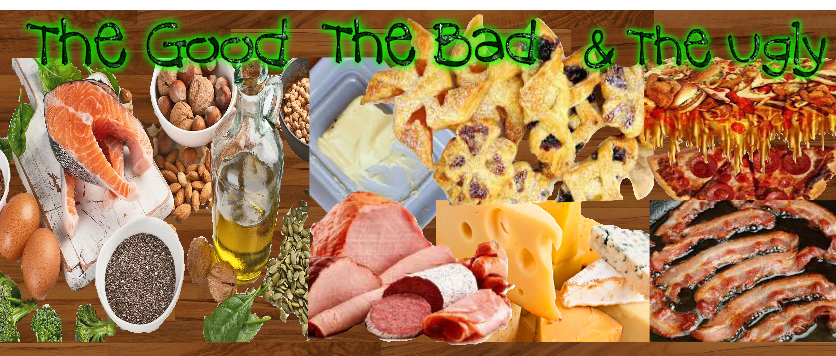What Is Dietary Fat?
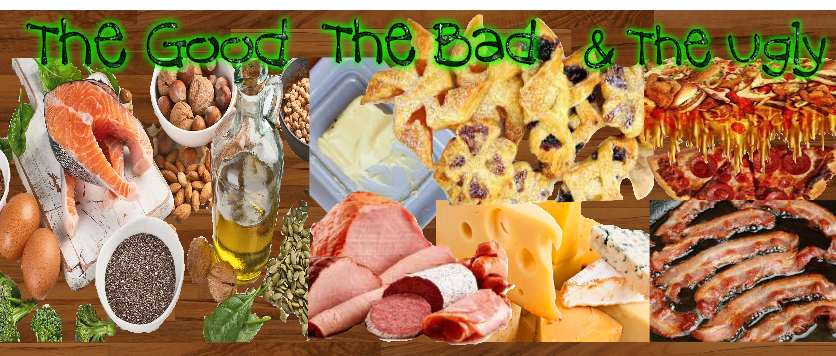
Fat: What have we been taught about this seemingly filthy three letter word, that dominates advertising in the health, fitness, magazine and television industries. Even the net and its different advertising companies all love to take turns pounding this misunderstood word to dust.
It's amazing, how the smallest word in the English language often dominates our headlines.
So… where does the truth lie in all of this? Is there any truth in what were being told or sold? As with most things we learn in life and have to learn to except, is life is full of trade-offs and compromises and dietary fat is no exception.
Learning what fat is and what it isn’t including what sources are healthy as well as which ones aren’t, comes down to its biology. So, let's begin by examining how the body works and what its needs are, to maintain optimum health and performance.
Do We Need Dietary Fat?
Do we need dietary fat, if so, what kind and in what amounts are recommended to promote health and well being?
The answer is: Yes we do! Although I would probably run out of room trying to list them all… let's start with some of the big ones.
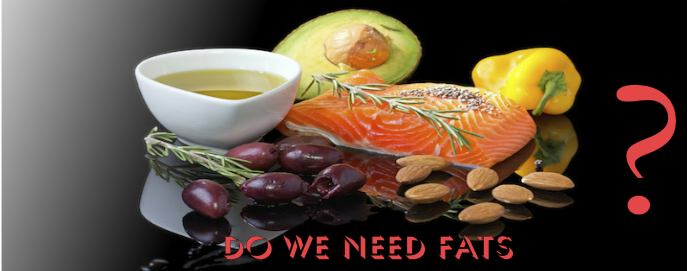
Positive needs of dietary fat: (when ingested in the right amounts).
We need dietary fat for Vitamins A, D, E and K to assimilate and dissolve to be transported and used where needed, via the blood.
This may not sound important; but these vitamins are essential to reducing inflammation, infection and immune cell reconstruction; even assisting in hormone reproduction and stabilizing cholesterol levels. This means that: without the necessary dietary fat these vitamins can’t perform the little miracles they Do!
The body typically uses carbohydrates for the first 20 – 30 mins. of exercise or labor-intensive work.
After that, the brain and central nervous system begin to release their hold on fat stores, re-assimilating our energy stores from stored bodyfat giving us energy to continue working for much longer periods.
The reason fat has longer energy sustainability is; its twice as dense as other macronutrients, complex carbs and protein have approx., 4 grams of energy rich calories as compared to fat, with 9 grams – yes that’s right, over twice as much, so it's easy to see how a little goes a long way compared to other macros.
Dietary fat coats our food right from the time it enters our mouths, sending our taste bud and saliva receptors into eating Nirvana. This sensation is stimulated further from the brain, sending hormonal sensations into overdrive.

Anytime we feel satisfaction or contentment from eating, fat sends signals to the brain telling it whether we’ve eaten enough or not, (unlike protein and carbs). This contentment from healthy dietary fat tells us were full, working as a protection from over-eating, (that’s only of course if we listen to it).
Fun fact: the human brain is like a computer made up of many sensors and receptors, but… did you know its composition is almost 70% fat, yes you read right, 70%. When craving signals are sent from our brains for fat or carbs --- THAT’S WHOS CRAVING IT!
The brain typically needs a specific fat in the form of (omega 3-fatty acids), commonly found in fish. Omegas’ are the building blocks of the brain giving it a host of essential nutrients and energy that are essential to learning and memory.
The healthy brain Does Not Like saturated fats; listed (further down), clinical studies have shown over time, these fat sources noticeably reduce memory, thinking and problem-solving skills.
Negative needs: Over indulgence on dietary fat of any kind often causes a host of problems, such as: elevated weight gain, heart and artery composition can be compromised, can also cause blood-pressure and cholesterol levels to rise; even slowing the digestive tract, that can bring the onset of type 2 diabetes into a negative health imbalance.
Dietary Fat And Cholesterol
Polyunsaturated fats are safer sources: fish, avocadoes, seeds, nuts etc., can all be considered in a healthy or heart friendly diet, (just be allergy aware). Poly and Monounsaturated fats can also help lower blood pressure and blood cholesterol levels.
But, as with all things that are good for us… Moderation Is Essential, all types of dietary fat are high in calories.
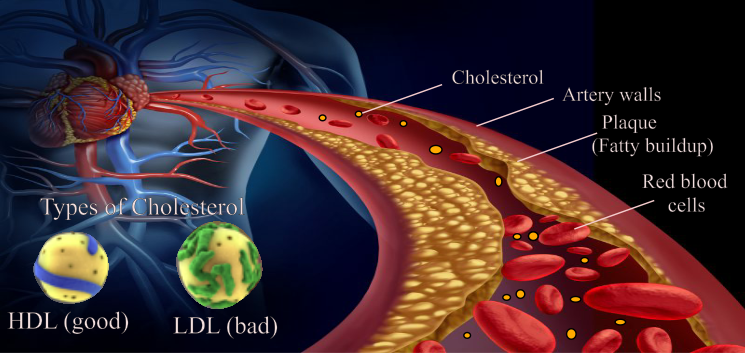
So, what is Cholesterol and where does it fit into dietary fat?
Good question:
There are 2 common types of cholesterol HDL (good cholesterol) this is produced by the liver. HDL is necessary in its production as the body uses it to produce new cells and aid in their function, hormone and vitamin (D) production, including different digestive fluids, are all part of HDL’s tasks.
The other way cholesterol enters the bloodstream is from animal fat or dairy products, fast foods, pastry and some cooking oils. These products often have saturated and or trans fats, these fats typically cause the liver to produce more cholesterol than it would otherwise.
The second type is what’s known as (LDL) cholesterol, or (bad-unhealthy). If higher than normal levels exist, reducing some of the items (listed above) from the menu, usually helps these levels come into a safer balance.
LDL cholesterol can coat and reduce artery and vessel size, resembling a yellowish-waxy substance that can cause, (Atherosclerosis – or hardening of the arteries), if levels begin to increase on the unhealthy dial, so may the chances of cardiovascular, heart disease, stroke or type 2 diabetes.
Heart Disease is a serious health risk… That’s why it’s ranked #1 in the world!
HDL is partly responsible for carrying LDL away from arteries and returning it back to the liver, where it’s then broken down and passed by the body.
HDL doesn’t remove all of the LDL, only 25 – 30% of this is removed by this process: reducing higher levels if you have them, falls to the individual.
LDL levels can be reduced through regular exercise, eating less read meat or trimming away excess fat or choosing leaner cuts, avoiding frying or sautéing: while refraining from fast or junk foods etc.
Your family physician or health care provider can help you determine and explain these levels better and help you decide if your levels are fine or need some adjusting, if you have concerns.
Does Dietary Fat Make Us Gain Unwanted Weight?
The body processes and arranges different fats in different ways to serve a multitude of different tasks, as not all fats are created equal.
Looking at fat like a savings account:
The amount of fat your allowed to consume each day is your allowable budget.
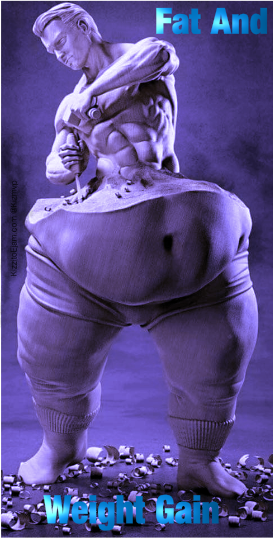
Which is; approx. 45 – 75 grams per day for a healthy active male/female, based on a 2000 calorie per day diet. Putting this figure to work would be 20 - 30% of total caloric intake of dietary fat with most of it coming from whole food sources.
Make no mistake, if you have a high fat diet it will more than likely lead to weight gain, (unless you have an unusually fast (metabolism). As mentioned, the calorie density of fat is twice from that of other macronutrients.
If you’re trying to lose weight consider watching your total calorie consumption, as well as appropriate portion sizes, (more on this further down).
Because of calorie density in fat, it’s important to have a form of measurement to equate the right portion size.
As an example: one teaspoon of mayonnaise, margarine or butter is about one daily fat serving. You can equate this measurement to the top half of your thumb – one daily fat serving is about 50 calories or 5 grams from saturated fat.
Here are a few examples as a guide:
- 1.5 – 2 Tbsp reduced-fat salad dressing
These portions and food types are for illustration only, depending on diet and activity levels – can often alter weight loss results.
Note: before you make or alter any changes to your daily menu, always consider asking your family physician or speaking to a reliable dietician for safe, healthy weight loss results.
Dietary Fat Comes in 4 Types
There are 4 different broad categories of dietary fats. Consider consuming more of some types of fats and less of others is important. A good recommendation for a healthy diet would be:
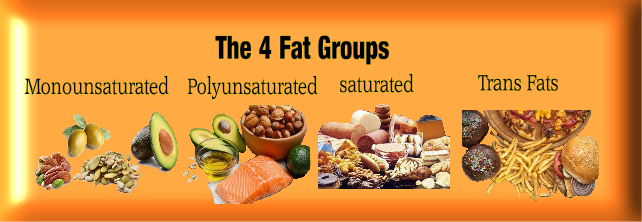
Monounsaturated
fat: (Healthy) - daily, 15 – 20% (such as Avocados, Nuts or nut butters, Olives, Olive, Canola, or
Peanut cooking oils.
Polyunsaturated fat: (Healthy) - daily, 5 – 10% (such as: safflower, corn, soybean, nuts and flaxseed)
Saturated fat: (Less healthy) - daily, less than 8% (solid at room temp., often found in meat and dairy, such as: butter, cheese, cream, lard, animal fat, palm or coconut oils, pastry, chocolate, processed meats - salami, bologna etc. and fried or fast foods)
Trans fats: (Unhealthy), daily, 0% (these should be a leave alone)
Trans fats are often manufactured, adding hydrogen to vegetable oil, causing oil to become solid at room temperature for food manufactures, extending shelf life longer. E.g. Restaurant fryers often use these oils to prolong cooking usage.
Cholesterol: less than 300 mg per day
So What Would Be The Healthy Fat Menu?
Natural foods with healthy fats:
From the Seed family
- Sesame, Pumpkin, Flax, Sunflower, Hemp and Chia seed
From the nut family
- Walnuts, Cashews, Almonds, Hazelnuts and Pecans.
From Fish
- Salmon, Tuna, Herring, Sardines, Trout, Mackerel and omega 3s’ found in fish oils and eggs
From Vegetables and other plants
- Avocados, Olives, Soybeans, Coconut, Edamame-(soybeans immature)
From Plant based cooking oils: shown below are 5 Healthy Choices
Typically cooking oils come in 2 different processes: refined and cold pressed.
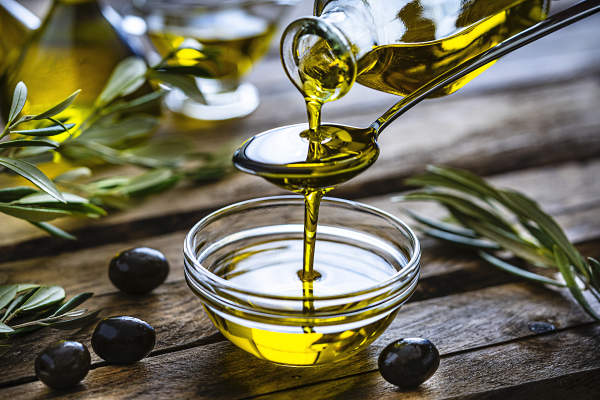
Refined
and highly-refined usually allow for higher cooking temperatures called the
(smoke point), for frying, roasting or sauteing. More chemically processed, can
mean a little less healthy.
Note: learn to read the nutrition labels on the back, calorie density and refinement and other additives should be considered by comparing. Here are some of the healthier choices and their recommendations below.
Cooking oils that are pressed; are just that: pressure is used to crush natural foods and extract the natural oils from fatty pulp.
Extra virgin Olive Oil, Canola oil, Avocado Oil, Safflower Oil and Sesame oil
1st Extra virgin olive oil (a less refined cooking oil).
It has a lower smoke point temperature for cooking, about 350 degrees F
Best for: A light sprinkle on food or for sautéing
Not recommended for: Roasting or frying over 375 degrees F
2nd Canola Oil (a refined oil not pressed, still a healthy cooking oil).
Has a higher smoke point temperature for cooking – up to 400 degrees F
Best for: Baking, roasting or frying foods
Not recommended for: salad dressings, drizzling or sautéing
3rd Avocado oil (pressed - less refined, very healthy, but expensive)
Has a higher smoke point temperature for cooking – up to 400 degrees F
Good for: Frying
Recommendations: a little expensive for a tight budget, but healthy
4th Safflower oil (is sold in both pressed and refined types)
Has a higher smoke point temperature for cooking – up to 500 degrees F
Best for: Sautéing and frying foods
Not recommended for: Salad dressings
5th Sesame oil (pressed, less refined, healthy and flavourful)
Lower smoke point temperature for cooking – 350- 400 degrees F
Best for: Sautéing or on green salads
Not recommended for: foods that don’t go well with sesame flavor.
There are other good healthy cooking oils out there, including some of the peanut and olive oil brands. Just be sure to always read labels closely if calories or allergies are a concern!
Concluding:
Should we be afraid or a little nervous of dietary fat?
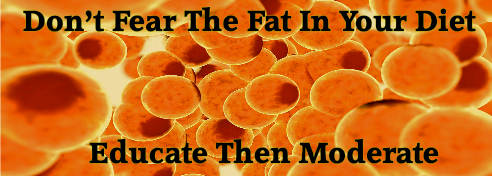
Its no different
than driving or walking in a busy part of town. You need to know where you want
to go, so you read traffic signs, pay attention to lights and watch for crosswalks
and pedestrians; in other words: you need to pay attention and use your skill
and good common sense to be careful and arrive at your destination safely.
When it comes to your car you don’t put diesel fuel in your vehicle if it has a gas engine and visa versa. The proper fuel/gas makes the car run perfect… so why would your body be any different; it to needs the right dietary nutrition as well.
If you’re trying to be health or maybe weight conscious:
Use spices, cooking oils (sparingly) rather than butter, margarine or lard
Eat lean sources of meat, chicken or fish and consider removing visible fat
Bake, broil or grill meats preferably on an elevated rack to remove excess grease
Use dressings, creams, sauces and gravy very sparingly
If you’re dining out
Try to choose foods like baked, broiled or roasted fish or chicken
Avoid fried foods
Request your food to be cooked without butter, gravy or other creamy sauces
Eat salads with dressings on the side and (used sparingly)
Choose desserts like: fruit, sherbet or sorbet or non-fat frozen yogurt, I know...
it sounds easy reading it here doesn’t it! Let’s face it, we both know, in reality, change is anything but easy. Our bodies and taste buds get used to certain foods, and food processing companies and restaurants know this and lace their foods with butter, cheese, salt, gravy, cream-sauces and dressings to keep you coming back.
I’m know different than you! I to struggle with certain foods. So, I leave you with this… if better health or weight loss is a concern, try to be faithful to making a hard decision 'like eating healthier', by taking it a day at a time.
Try for an 80 – 90% success rate with any new changes in eating habits, and always leave a little room in there for fun… because without it - it becomes harder to stick to!
I Hope this helps a little with some of the dietary fat mystery - if there was. Because after all, "our reflection is determined by what we eat".
DWT


